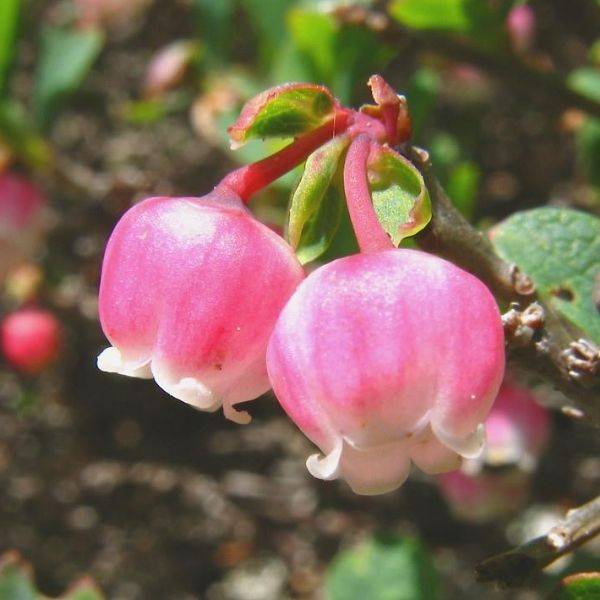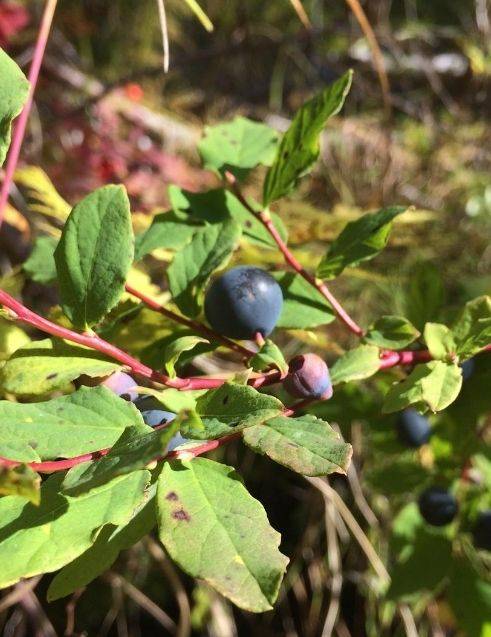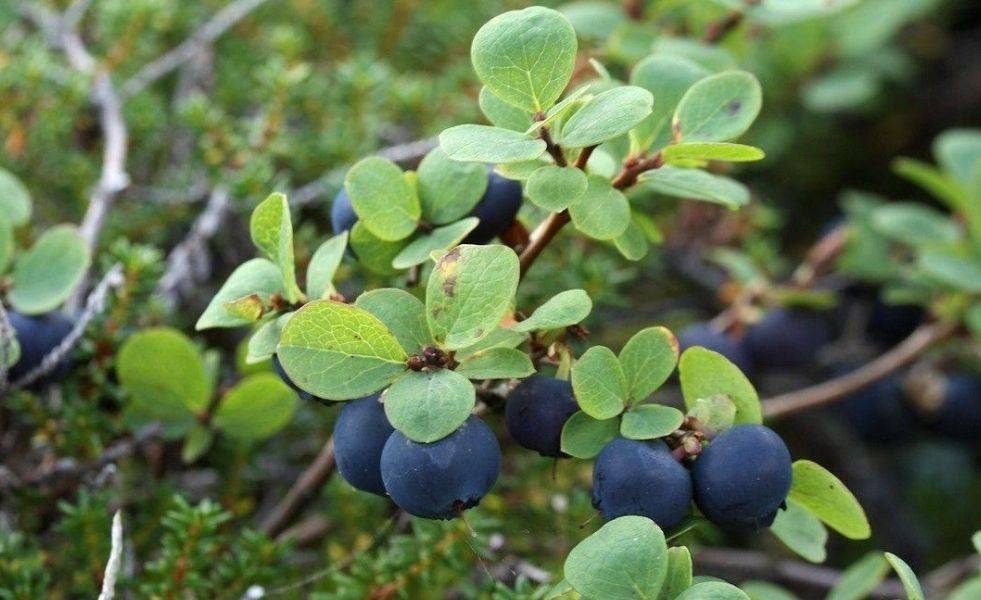Alpine Blueberry
Also called bog bilberry or lowbush blueberry
- Iñupiaq name: Asiat or Asiavik or Asiaviautaq
- Family: Ericaceae
- Scientific name: Vaccinium uliginosum
- Growth form/distinguishing characteristics: Dwarf shrub 6 - 16 inches tall with woody branches and dull green oblong leaves. Flowers are bell shaped and white or pink. Berries can be blue to dark blue to almost black.
- Similar species: Blueberry can sometimes be mistaken for other members of the Ericaceae family, because the family has very distinct urceolate (urn shaped) flowers. Blueberry stands out from bearberry, lingonberry, and Kinnikinnick because it has striking dark blue berries and large leaves with smooth margins. Blueberry and bog rosemary, a poisonous plant found on the North Slope, are sometimes confused. However, unlike the thicker, oval leaves of the blueberry, bog rosemary has very thin, almost needle-like leaves and light pink berries.
- Habitat: Low elevation bogs, subalpine heath, and rocky tundra with dry to moist soil.
- Best time to harvest: Berries ripen in mid-July to September
- Uses: Berries are eaten as is or in jam or other foods like baked goods. They may also be preserved by freezing or drying. Leaves can be added to tea for flavor.

Photo by Donna Kausen, Native Plant Trust

Photo courtesy of the GVSU Arctic Ecology Program

Photo courtesy of the GVSU Arctic Ecology Program
